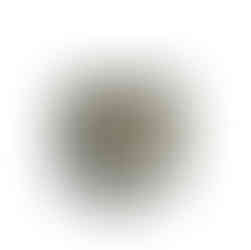青銅筆記 vol 6. 吉金藏禮:淺談中國古代禮祭文化與社會中的青銅器 - Ancient Chinese Bronzes in Ritual and Society: A Brief Introduction.
- SACA

- Apr 23, 2024
- 10 min read
青銅器是中國文明起源的重要標誌,跨越三千餘年,象徵中國從原始時代邁向文明。本文乘「天人之際」開拍期間,探究古代青銅器在禮制和日常生活中扮演的角色。
Bronze has played a significant role in Chinese culture for over three millennia. Ahead of Ritual and Reality, Marian Ang explores the role ancient bronze vessels played in rituals and everyday life.
「青銅堅固耐用,因而成為大家從歷史和現代意義上了解中國早期藝術的中心」
——柯律格
“The durability of bronze has put it right at the centre of all historical and modern understandings of early art in China”
- CRAIG CLUNAS
1928年,第一代中國專業考古學家在民國政府資助下,在商朝最後的都城、今稱安陽的殷墟發掘出一批古代青銅器。這批青銅器的出土極具象徵意義,代表考古科學的現代化進程,與中國古代文化和文字傳承連繫起來。
美國學者羅伯特・貝格利(Robert Bagley)表示,青銅鑄造技術最早於公元前1500年至公元前1300年發源於中國北部的黃河流域。商朝建立之初,政治勢力開始從黃河流域向南擴展。與中東和希臘相比,商朝初年已坐擁大量銅錫礦(青銅為銅錫合金),礦產量異常驚人。然而,從開採礦石,到冶煉原料的複雜過程,以至鑄造青銅需要的龐大人力,只有權貴階級才有財力製造青銅器。正因如此,青銅最初只會用於製作禮器,以及與禮儀相關的鐘、武器和馬車配件。青銅器也如玉器般珍貴,是古代社會地位的象徵,統治階級甚至會將青銅器代代相傳,宣示正統。
A bronze ritual food vessel, li, Late Shang dynasty | 商晚期 青銅鬲
w. 16.2 cm
The unearthing of archaic bronzes at Anyang – the last capital of the Shang Dynasty – in 1928 by the first generation of professional Chinese archaeologists working under the aegis of the Republican government was a highly symbolic occasion. It linked modernity, in the form of archaeological scientific progress, with ancient Chinese cultural and written heritage.
According to the American scholar Robert Bagley, bronze working technology first developed in 1500-1300 BCE around the Yellow River valley in northern China. From there early Shang political power spread southwards. The early Shang dynasty enjoyed an unusually large quantity of copper and tin deposits (bronze being an alloy of both) at their disposal, compared to the Middle East and Greece. Only the rich and powerful had the means to make bronze vessels, to obtain the raw materials and to support the complex operations and many workers required to cast the metal. Because of this, bronzes were initially reserved for use as ritual vessels, other objects connected with the rites such as bells, weaponry and chariot fittings. Like jades, these precious objects became important signifiers of social standing, and were passed down through generations of the ruling elites.
A bronze mask, Western Zhou dynasty | 西周 青銅面具
l. 27.8 cm, Collection of Sondra Landy Gross.
來源:
Sondra Landy Gross 收藏
Exhibited
A walk through the ages: Chinese archaic art from the Sondra Landy Gross collection, Hillwood Art Museum, Brookville, New York, 2004, cat. no. 24.
展覽:
《A walk through the ages: Chinese archaic art from the Sondra Landy Gross collection》,希爾伍德美術館,布魯克維爾,紐約,2004年,編號24
與安陽青銅器出自同一時代的甲骨文,記載了為祭祀祖先而準備的典禮宴會和儀式餐食,部分儀式幾乎會每天進行,祈求先祖神靈降福庇佑,保子孫基業。在這些宴會上,青銅器用以盛載祭祀神明的食物酒水,部分青銅器出土時,帶有煤灰留下的痕跡和骨頭碎片。鼎深腹高足,為祭祀時盛放食物的大鍋,當屬青銅器中地位最重要的器類。
夏朝是中國史上第一個世襲朝代,銅鼎在夏朝的傳說中別具深意,相傳夏禹將天下劃分為九州,以九牧所貢之銅鑄九鼎,象徵九州。自此,「鼎」鼎就是國家的權力符號。在戰國時代,擁有銅鼎就等於擁有合理合法的統治權。天子的墓葬規格一般以九鼎陪葬,諸侯葬以七鼎,大夫葬以五鼎。除鼎以外,觚「觚」和爵「爵」等酒器也是商朝常用的禮器。爵「爵」有三足,可從下方加熱溫酒。觚「觚」是高身盛酒器,束腰,口沿張開呈喇叭狀。觶「觶」最早見於商朝殷墟時期,圓腹侈口,西周初年逐漸成為禮儀中重要的盛酒器。
Oracle bone inscriptions contemporary with the Anyang bronzes tell of ceremonial banquets or ritual meals for ancestor worship, some of which were performed almost daily to invoke the goodwill and protection of the ancestral spirits. Bronze vessels, some excavated with traces of soot and bone fragments, were reserved for sacrificial offerings of food or wine at these banquets. The tripod ding vessel, a ritual food cauldron with a deep body supported on tall legs, is perhaps the most important shape. It features prominently in the legend of China's first dynasty, in which King Yu the Great of the Xia divided the realm into nine provinces, each represented by a ding.
The idea of possessing a bronze ding thus became synonymous with political legitimacy and sovereignty well into the Warring States Period. Emperors were customarily buried with nine ding, feudal lords with seven, ministers with five, and so on. Gu and jue ritual wine vessels were also popular during the Shang dynasty. The jue’s tripod shape enabled its wine to be heated. The gu is a tall chalice that flares elegantly at the rim like a trumpet. The zhi first appeared in the middle of the Yinxu period, and became an important ritual wine receptacle by the early Western Zhou dynasty.
A pair of silvery bronze chariot fittings, Han dynasty | 漢 銅鎏銀馬車軎轄一對
h. 7.8 cm
當時的禮儀用器還包括其他酒器:尊「尊」是高身盛酒器,無耳,敞口,口徑大於圈足;壺「壺」深腹斂口,呈梨形,形制沿用至今。連「連」呈闊身圓筒狀,有蓋,用以盛放供食。簋「簋」闊口深腹,應為放穀物飯食的盛食器。其他用於禮儀的食器還有用作煮食器的鬲「鬲」,侈口,折沿,有三袋足。匜「匜」是用以倒水洗手的水器,形狀似瓢,一側有流,另一側有常作龍形的把手,器底有四足,應為盛載供人在祭祀儀式前洗手的用水。
青銅禮器能夠保存逾千年,主因是大部分出土青銅器都是陪葬品,確保墓主可以在來生繼續履行主持祭祖的職責。雖然這類大型墓葬大部分已於西周初年被洗劫一空,但1976年考古學家仍然能在安陽發掘保存完整的婦好墓,墓葬斷代公元前1200年左右,墓主生前是商王武丁的嬪妃。婦好墓出土了總共468件青銅器,當中約210件為禮器,所有青銅器共重1625公斤(未計銅鈕),可見商朝王室中較次要的成員,也可享有如此大量的青銅陪葬品。
Other ritual wine vessels included the zun, a tall cup with no handles or legs whose lip is broader than the rest of the vessel. The hu is a pear-shaped wine vessel whose production continues to this. A cylindrical container with a cover called a lian was used for food offerings, whilst a gui was a bowl-shaped vessel probably used to hold grain. Other ritual food vessels included the li, a cooking vessel supported by three legs shaped like pointed lobes. The yi was a half-gourd shaped pouring vessel with a handle (often in the shape of a dragon) and usually supported by four legs. It is believed to have contained water for washing hands before sacrificial rituals.
Ritual bronze vessels have been preserved over the millennia largely due to the fact that many were buried in tombs with their wealthy owners, in order to continue their sacrificial duties in the afterlife. Although most of these larger tombs were looted as early as the Zhou Dynasty, the 1976 discovery in Anyang of the untouched tomb of Lady Fu Hao (dating from around 1200 BCE), consort of King Wu Ding, fourth Shang ruler, demonstrates the enormous wealth of bronze possessed by even lesser members of the Shang royal families. Some 210 ritual bronze vessels were counted amongst a haul of 468 bronze artefacts, altogether weighing 1,625 kg (not including bronze buttons).
A gilt-bronze 'turtle' ink stone cover, Han dynasty | 漢 銅鎏金龜硯蓋
l. 14 cm
Provenance Laiyantang Collection, Hong Kong, 1990s.
來源: 來燕堂收藏,香港,1990年代
早期青銅器鑄作繁複:先用泥為欲鑄器皿塑模,燒成陶模即成母模,再以母模製作泥範,燒成後將陶範拼合,放入陶製範芯,然後將熔化合金填注範腔,合金冷卻後脫範,修整多餘的毛刺和飛邊,最後打磨和拋光器身。在鑄造這些青銅器的時代,青銅器表面沒有現今所見的綠色銅鏽,當時的人眼中,青銅器可是金光燦爛,閃閃生輝。古代鑄造青銅器,一般以成套組合製作,尺寸和精細程度按器主的身分等級而有所差異。
商朝銅匠發展了一套紋飾系統,當中圖形意象為數不多,銅匠卻可以從審美和等級考慮,將不同元素組合重構,組成各類青銅器的紋飾設計。商朝青銅器上有一種常見的獸面紋飾,戰國末年有書提及這種紋飾為饕餮紋。饕餮紋一般為正面的獸首,有對稱的角和凸出的眼睛,這是古代傳說中一種貪吃可怖的惡獸,但同時亦是為人驅邪避凶的靈獸。有人提出青銅器的饕餮紋源於良渚文化玉器的獸面紋,不過至今尚未證實兩者有所關聯。此外,除銘文或其他資料指明作坊內世襲匠籍的子弟外,青銅器上不會鑄刻製作者或作坊名字,因此現世對青銅器的製作者所知甚少。
商朝國勢在安陽時期(公元前1300年至公元前1000年)初年已趨於沒落,遂將勢力範圍退守至河南的根據地,其後大約公元前1050年,商朝為西方部族周人所滅。周人滅商後建立西周,沿襲前朝的傳統和文化,包括製作具有商朝遺風的青銅禮器。周天子會向追隨他的貴族賞賜青銅器和製作青銅器的原料,青銅器也就如同玉器、武器和馬車配件一樣,成為傳統貴族生活的配備。早期青銅器銘文表明如此「寶器」是留給「子子孫孫永保用享」。公元前900年左右,青銅器的裝飾開始簡化,所鑄銘文更加豐富,以銘文取代紋飾,彰顯器主的威權。此時許多墓葬都混雜前朝和西周鑄造的青銅器,並非以成套的青銅禮器隨葬。
青銅器隨著時代轉變,逐漸脫離原有的宗教色彩,擺脫禮制約束。春秋戰國交替之時,霸主消失,列國並起,各國為土地和人口不斷兼併,戰爭更趨頻仍,國家比較軍事力量之餘,也會以財富物質展示威望,當中以青銅工藝成為地方諸侯展現軟實力的重心。青銅器成為廣受王侯貴族喜愛的奢侈品,而且統治階級以外的富人日益增加,獨立青銅作坊蓬勃發展,滿足他們對青銅器的需求。除不再流行的個別器型外,各式各樣的青銅器應運而生,適應更廣闊的市場。當時的作坊還用上不同方法製作青銅器,不僅在器面錯上金銀等貴價金屬,還會製作較易負擔的銅器,以及加入人獸相鬥等有異域特色的紋飾,迎合所在地區的品味。考古發掘的戰國資料顯示,當時作坊更會調整製作技術,例如重用陶範,盡力提高產量。
Early bronze wares were cast through a complex process: a clay mould of the finished vessel made in sections would be joined together, then a clay core would be fitted into the mould and molten metal poured into the space between. Once the external moulds were removed, the surplus bronze was filed away, revealing the final product. Without the customary green oxidised patina of their present-day appearance, these objects would have shone brightly. Bronzes were typically created in sets, differing in size and elaborateness in accordance with their owner’s status.
Their makers developed a modular system of design using a small repertoire of motifs and compartments. One of the most common motifs on Shang bronze vessels became known by the late Zhou period name of taotie, or “glutton”. With horned symmetrical faces and bulging eyes, these mysterious creatures are regarded as terrifying monsters but also as protectors. One hypothesis is that the motif derives from the monster mask found on some Liangzhu jades, but this connection has not been proven. Little information also exists about the makers of such vessels, since they never carried the names of individual makers or workshops, although some sources point to hereditary groups of specialised artisans.
Shang political power began to wane at the beginning of the Anyang period (1300-1000 BCE), contracting back towards its base in Henan before being destroyed by the Zhou, people from the west of the Shang kingdom, around 1050 BCE. After taking over Shang territories, the Western Zhou inherited their predecessors’ traditions and culture, including the production of Shang-style ceremonial bronzes. The Zhou kings gifted bronzes and raw materials for bronze-making to their followers, and bronzes became accoutrements of a conventional aristocratic lifestyle alongside jades, weapons and chariot fittings. The earliest bronze inscriptions state that such “precious vessels” are to be “treasured forever by sons and grandsons”. Around 900 BCE, bronzes became simpler in decoration and more extensively inscribed, with inscriptions rather than design indicative of an owner’s power and prestige. They were still buried in tombs, but as part of a motley hoard of bronze wares rather than a ritual set.
Bronze vessels became further detached from their original religious and ritualistic purposes as time went on. The increasingly constant state of conflict and competition as the Spring and Autumn Period (770–476 BCE) turned into the Warring States period (475-221 BCE) manifested itself in ostentatious soft power displays of material wealth and prestige amongst rival regional courts, with bronze craftsmanship at the heart of this. As bronzes became coveted luxury items, independent workshops flourished, ready to service an eager and growing clientèle outside of the ruling courts. Whilst some shapes of bronzes fell out of use completely, a diverse variety of bronze vessels appeared to cater to a wider market. As well as offering bronze inlaid with precious materials such as gold and silver, foundries also produced cheaper consumer goods and exotic designs to cater to local tastes, such as animals in combat. Technical adjustments to maximise production, such as reusing mould pattern blocks, are evidenced in archaeological finds from the period.
安陽是中國第一個有文獻記載的都城,有華夏文明搖籃的美譽,在當地和附近出土的珍寶是構成中國源遠歷史的重要一部分。然而,隨著考古文物陸續出現,這種圍繞商文化形成的「中國屬性」不只見於安陽,還見於現今四川成都附近的廣漢三星堆等不同遺址。由此可見,每件出土器物都為現今的中國增姿添彩,對我們認識中國古代科技成就和豐富多樣的文化藝術有重要意義。
Anyang is often called the cradle of Chinese civilisation because, as the earliest capital of China in written record, the treasures unearthed in its vicinity have become part of the essential narrative of ancient China. But this notion of a homogeneous “Chinese-ness” centred around Shang culture has evolved with subsequent archaeological discoveries, not only around Anyang, but at places such as Guanghan Sanxingdui, near modern-day Chengdu in Sichuan province. Each item discovered adds more colour to the story of modern-day China, providing a fascinating insight into the technological achievements as well as the cultural and artistic diversity of ancient Chinese civilisations.
關於作者
Marian Ang is a Hong Kong-based art writer and researcher, and a regular Sotheby’s contributor.
this article was first published on Sotheby's on 1st Apr, 2024.













































Comments